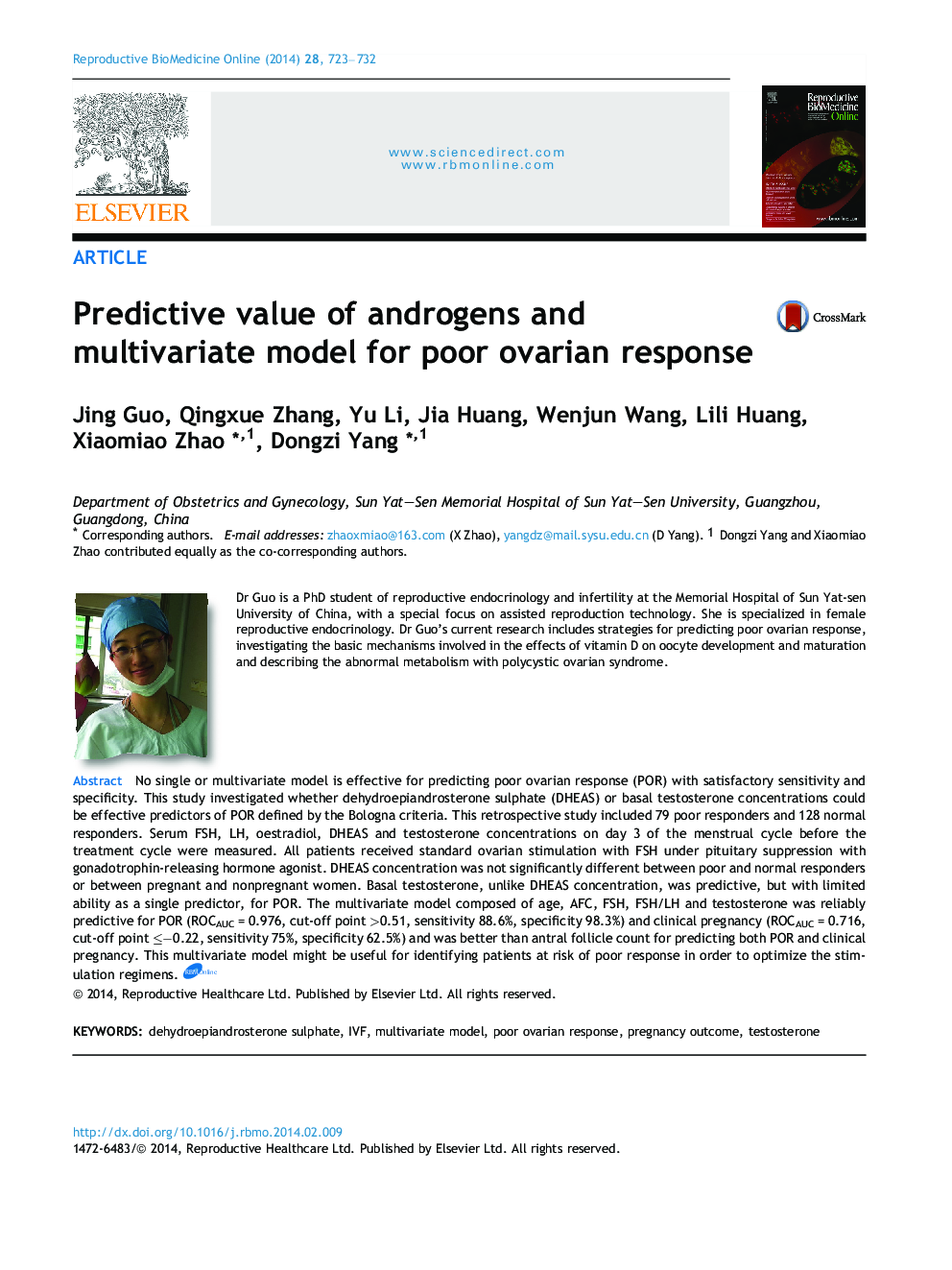| Article ID | Journal | Published Year | Pages | File Type |
|---|---|---|---|---|
| 3970330 | Reproductive BioMedicine Online | 2014 | 10 Pages |
No single or multivariate model is effective for predicting poor ovarian response (POR) with satisfactory sensitivity and specificity. This study investigated whether dehydroepiandrosterone sulphate (DHEAS) or basal testosterone concentrations could be effective predictors of POR defined by the Bologna criteria. This retrospective study included 79 poor responders and 128 normal responders. Serum FSH, LH, oestradiol, DHEAS and testosterone concentrations on day 3 of the menstrual cycle before the treatment cycle were measured. All patients received standard ovarian stimulation with FSH under pituitary suppression with gonadotrophin-releasing hormone agonist. DHEAS concentration was not significantly different between poor and normal responders or between pregnant and nonpregnant women. Basal testosterone, unlike DHEAS concentration, was predictive, but with limited ability as a single predictor, for POR. The multivariate model composed of age, AFC, FSH, FSH/LH and testosterone was reliably predictive for POR (ROCAUC = 0.976, cut-off point >0.51, sensitivity 88.6%, specificity 98.3%) and clinical pregnancy (ROCAUC = 0.716, cut-off point ⩽−0.22, sensitivity 75%, specificity 62.5%) and was better than antral follicle count for predicting both POR and clinical pregnancy. This multivariate model might be useful for identifying patients at risk of poor response in order to optimize the stimulation regimens.No single or multivariate model is effective for predicting poor ovarian response (POR) with satisfactory sensitivity and specificity. It has been suggested that androgens stimulate folliculogenesis and their concentrations might be correlated with oocyte yield after ovulation induction. We investigated whether dehydroepiandrosterone sulphate (DHEAS) or basal testosterone concentrations could be effective predictors for POR defined by the Bologna criteria. This is a retrospective study with 79 poor responders and 128 normal responders. Serum FSH, LH, oestradiol, DHEAS and testosterone on day 3 of the menstrual cycle before the treatment cycle were measured. All patients received standard ovarian stimulation with FSH under pituitary suppression with gonadotrophin-releasing hormone agonist. DHEAS concentration was not significantly different between poor and normal responders or between pregnant and nonpregnant women. Basal testosterone, instead of DHEAS, was predictive, but with limited ability as a single predictor, for POR. However, the multivariate model of (0.563 × Zage) − (0.505 × ZAFC) + (0.506 × ZFSH) + (0.34 × ZFSH/LH) − (0.24 × Ztestosterone) (ZXi = standardized values of variables) was reliably predictive for POR (ROCAUC = 0.976) and pregnancy (ROCAUC = 0.716) and was better than antral follicle count for predicting both POR and pregnancy. This multivariate model composed of age, AFC, FSH, FSH/LH and testosterone might be useful for identifying patients at risk of poor response in order to optimize the stimulation regimens.
